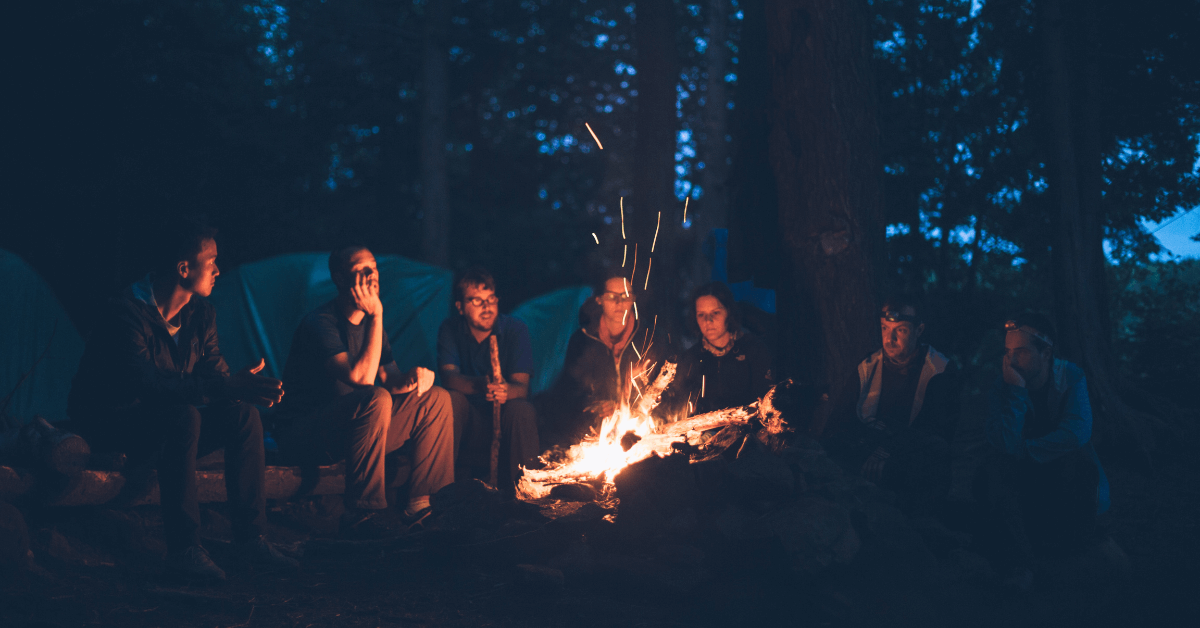As a student, there’s more to life than textbooks and classrooms. Spending time outdoors and engaging in outdoor activities can be incredibly beneficial for both physical and mental health, especially when it comes to survival skills. Whether you’re planning a camping trip or just want to learn some essential skills for outdoor living, taking part in outdoor survival activities can be an exciting way to learn new skills, develop confidence, and get some much-needed fresh air.
Participating in outdoor survival activities can also help build teamwork and problem-solving skills. Learning how to build a shelter, start a fire, or navigate using a map and compass requires collaboration, communication, and critical thinking.
These skills are transferable to many other areas of life and can benefit students in their academic and personal pursuits.
So, if you’re looking for some exciting and educational activities to try out, look no further! In this blog post, we’ll share 10 fun outdoor survival activities for students that will challenge you, teach you new skills, and keep you entertained.
1. Edible Plant Identification
One of the most important skills for any outdoor enthusiast to have is the ability to identify edible plants in the wild. Knowing which plants are safe to eat can mean the difference between survival and starvation in an emergency situation. Here are some tips on how to identify edible plants in the wilderness:
- Research beforehand: Before heading out on your outdoor adventure, research the local plant life and familiarize yourself with the plants that are safe to eat. You can use field guides or online resources to help you identify plants.
- Look for common edible plants: There are many common edible plants that can be found in most wilderness areas. Some examples include dandelions, wild berries, and cattails.
- Learn to identify poisonous plants: Knowing which plants to avoid is just as important as knowing which plants are safe to eat. Some common poisonous plants include poison ivy, poison oak, and hemlock.
- Use all your senses: When identifying plants, use all your senses to help you make an accurate identification. Look at the plant’s leaves, flowers, and fruit. Smell it and taste a small amount (if you’re certain it’s edible).
- Test new plants: If you’re unsure about a plant’s edibility, test it first by rubbing a small amount on your skin and waiting 24 hours. If there is no reaction, taste a small amount and wait a few hours to see if there are any adverse effects.
- Be respectful of the environment: When foraging for edible plants, be mindful of the impact you’re having on the environment. Only take what you need and avoid damaging the plant or its habitat.
By learning to identify edible plants, you’ll not only be able to survive in the wild, but you’ll also gain a greater appreciation for the natural world around you. Just remember to always be cautious and respectful when foraging for food in the great outdoors. Happy hunting!
2. Navigation

Navigation is a critical skill for outdoor survival, and learning how to read a map and use a compass can be a game-changer when you’re exploring new territory. Knowing how to navigate using these tools can help you find your way back to camp or civilization, even when you’re in unfamiliar terrain.
To get started with navigation, it’s important to understand the basics of map reading. Topographic maps, which show the contour lines of the landscape, can be especially helpful for navigating through wilderness areas.
Start by familiarizing yourself with the map’s legend, which explains the symbols and markings on the map. Then, learn how to read the contour lines, which indicate changes in elevation.
Once you’re comfortable reading a map, it’s time to learn how to use a compass. There are many types of compasses available, but a basic magnetic compass is all you need to get started.
Begin by holding the compass level and rotating the dial until the north arrow on the compass aligns with the magnetic north on the map. Then, use the compass to orient the map in the direction you want to go.
With these skills mastered, you’re ready to put them into practice. Choose a safe area with clear landmarks and practice navigating to a specific point on the map using your compass and map-reading skills. You can also practice orienteering, which involves navigating through a course using a map and compass.
Remember to always stay safe when navigating in the wilderness. If you’re unsure of your location or feel lost, stop and assess your surroundings. Look for landmarks and use your map and compass to determine your location. If necessary, backtrack to a known location or follow a stream or other natural feature to help guide you back to safety.
3. Wildlife Tracking
Tracking wildlife is not only a fun activity but also a crucial survival skill in the wilderness. Knowing how to track animals can help you find food, avoid dangerous predators, and even signal for help in an emergency. Here are some tips on how to track wildlife:
- Look for signs
Wildlife leaves behind various signs that can help you identify their presence. Look for tracks, scat, fur, feathers, and food sources to determine which animals are in the area.
- Follow the trail
Once you’ve found a track or other sign, follow it carefully to see where it leads. Pay attention to the size and shape of the tracks and the direction they’re heading in.
- Learn animal behavior
Knowing how different animals behave can help you predict their movements and track them more effectively. For example, carnivores like wolves and coyotes tend to follow game trails while herbivores like deer and rabbits tend to stick to open areas.
- Use your senses
Wildlife tracking requires the use of all your senses. Listen for animal calls, smell for musky scents, and look for visual cues like fresh scratches on trees or broken branches.
- Practice stealth
To get close to wildlife, you’ll need to be quiet and move slowly. Walk heel to toe, avoid stepping on twigs and leaves, and try to blend in with your surroundings by wearing earth-toned clothing.
- Be respectful
Remember that you’re a guest in the animals’ home, so be respectful and don’t disturb their natural habitat. Don’t approach or attempt to touch wild animals, and never feed them.
So, grab your binoculars, put on your hiking boots, and hit the trails to start tracking wildlife today!
4. Emergency Signaling
Being able to signal for help is crucial in an emergency situation. Here are some fun activities that can teach students how to signal for help in the outdoors:
- Whistle signals
A whistle is one of the most effective and easy-to-use signaling devices. Students can learn different whistle signals, such as the international distress signal of three short blasts, to communicate with rescuers.
- Mirror signals
A mirror can reflect sunlight to create a visible signal to search planes or other rescue teams. Students can practice aiming the mirror at a distant object to reflect the sunlight and create a signal.
- Smoke signals
Smoke can also be used to create a visible signal to search planes or other rescuers. Students can learn how to build a fire and create a dense, sustained smoke by adding green leaves or damp materials to the fire.
- Flare signals
Flares are an effective signaling device, especially in low-light conditions. Students can learn how to safely use flares and other pyrotechnics to signal for help.
- Flag signals
Students can learn how to use flags or other visual markers to create a visible signal. This could include creating a large X on the ground with rocks or sticks or using brightly colored materials to create a visible marker.
- Morse code
Morse code is a system of dots and dashes that can be used to communicate messages through sound or light signals. Students can learn how to use a flashlight or whistle to create Morse code signals.
Related: Funny Things To Use As Weapons In Survival Situations
5. Hunting and Trapping
Hunting and trapping are essential skills for survival in the wilderness. Here are some fun activities that can teach students how to hunt and trap in a safe and ethical manner:
- Archery
Archery is a great way to teach students how to aim and shoot accurately. Students can practice target shooting and learn how to handle a bow and arrow safely.
- Sling-shot hunting
Students can also learn how to hunt small game such as rabbits or squirrels with a sling-shot. This activity requires patience and accuracy, as well as knowledge of the animals’ habits and habitats.
- Fishing
Fishing is a great way to provide a reliable source of food in the wilderness. Students can learn how to tie different fishing knots, cast a line, and identify different types of fish.
- Survival trapping
Students can learn how to construct different types of survival traps, such as the simple snare or deadfall trap, to catch small game. This activity requires knowledge of animal behavior and the ability to construct effective traps with natural materials.
- Wild game identification
Students can learn how to identify different types of wild game, such as deer, elk, or wild turkeys, and learn about their habits and habitats. This can be useful in hunting or avoiding dangerous animals.
- Hunting safety
Safety is paramount when hunting. Students can learn about firearm safety, proper hunting techniques, and ethical hunting practices, such as not taking more game than necessary.
6. Water Collection and Purification

When you’re out in the wilderness, finding a reliable source of clean water can be a challenge. But water is essential for survival, and it’s crucial to know how to collect and purify it in case of an emergency. Here are some tips on how to collect and purify water in the great outdoors:
A. Look for a water source
If you’re in an area with no obvious water sources, look for signs of water such as vegetation, animal tracks, or damp ground. You can also use a map to locate streams, rivers, and other bodies of water.
B. Collect water
Once you’ve found a water source, you’ll need to collect it. You can use a water bottle, canteen, or other container to collect water. If the water is muddy or has debris, use a cloth or filter to strain out any impurities.
C. Purify water
Even if the water looks clear, it may still contain harmful bacteria and parasites. There are several methods for purifying water in the wilderness, including boiling, chemical treatment, and filtration.
- Boiling: Boiling water for at least one minute is the most effective way to kill bacteria and viruses. Make sure to bring the water to a rolling boil before removing it from the heat.
- Chemical treatment: You can also use iodine tablets or chlorine drops to treat water. Follow the instructions on the package carefully, and be sure to let the water sit for the recommended amount of time before drinking.
- Filtration: A portable water filter can remove bacteria, parasites, and other impurities from water. Look for a filter that meets EPA standards and can filter at least 0.2 microns.
D. Store water
Once you’ve collected and purified your water, store it in a clean container. Keep it away from sources of contamination and out of direct sunlight.
The knowledge above can be useful not only for survival situations but also for camping trips, hikes, and other outdoor adventures. So, grab your water bottle and get ready to explore the great outdoors!
7. Orienteering
Orienteering is the art of navigating through unfamiliar terrain using a map and compass. It’s a fun and challenging activity that requires both physical and mental skills. Here are some tips on how to get started with orienteering:
- Get the right gear
Before you start orienteering, make sure you have the right gear. You’ll need a good quality compass, a detailed map of the area you’re exploring, and appropriate clothing and footwear for the terrain.
- Study the map
The first step in orienteering is to study the map carefully. Look for key features such as rivers, hills, and roads, and familiarize yourself with the symbols and markings on the map.
- Plan your route
Once you’ve studied the map, plan your route. Choose a series of checkpoints or landmarks that you want to reach and mark them on your map.
- Use your compass
As you navigate through the terrain, use your compass to stay on course. Keep the map oriented to the direction you’re facing, and use the compass to make sure you’re heading in the right direction.
- Pay attention to your surroundings
Orienteering requires constant attention to your surroundings. Look for landmarks, such as distinctive trees or rock formations, that can help you stay on track.
- Be prepared for challenges
Orienteering can be a challenging activity, so be prepared for setbacks and obstacles. Don’t be afraid to backtrack or adjust your route if you encounter unexpected terrain or obstacles.
By mastering the art of orienteering, you’ll gain valuable survival skills that can help you navigate through unfamiliar terrain and find your way to safety. Plus, it’s a fun and rewarding activity that can be enjoyed by people of all ages and skill levels.
8. First Aid
Accidents can happen anytime, anywhere, and when you’re out in the wilderness, it’s important to know basic first aid skills that can save lives. Here are some key first aid skills that students can learn to be better prepared for emergencies in the outdoors:
- CPR and AED
Knowing how to perform CPR (cardiopulmonary resuscitation) and use an AED (automated external defibrillator) can help save someone’s life in the event of a cardiac emergency. There are many courses and certifications available that can teach students how to perform these life-saving techniques.
- Bleeding control
Learning how to control bleeding is essential in emergency situations, especially when medical assistance is not immediately available. Students can learn how to apply pressure to wounds, use tourniquets, and pack wounds to control bleeding.
- Treating injuries
Injuries such as sprains, fractures, and burns can occur during outdoor activities. Students can learn how to immobilize injured limbs, provide pain relief, and treat burns and blisters.
- Hypothermia and heatstroke
Extreme temperatures can lead to hypothermia or heatstroke, which can be life-threatening if not treated promptly. Students can learn how to recognize the symptoms of these conditions and provide appropriate care.
- Insect bites and stings
Insect bites and stings can be painful and even life-threatening in some cases. Students can learn how to identify different types of insects and their associated risks, as well as how to treat bites and stings.
- Basic wilderness first aid
There are specific considerations to take into account when providing first aid in the wilderness, such as the availability of resources and transportation. Students can learn how to adapt their first aid skills to these unique situations.
9. Nature Photography
Nature photography is a great way to explore and appreciate the beauty of the natural world. Here are some fun activities that can teach students how to take stunning photos of the outdoors:
- Basic photography skills
Before heading out into the wilderness, it’s important to teach students the basic principles of photography, such as composition, lighting, and exposure. You can start with simple smartphone cameras and later introduce more advanced cameras.
- Nature scavenger hunt
A nature scavenger hunt can be a fun way to get students to practice their photography skills. Create a list of natural objects, such as leaves, flowers, and rocks, and challenge students to capture them on camera.
- Wildlife photography
Wildlife photography can be a challenging but rewarding activity. Students can learn how to approach animals safely and take photos from a distance, without disturbing them. They can also learn how to use telephoto lenses and other equipment to capture wildlife in action.
- Landscape photography
The wilderness offers some of the most stunning landscapes on earth. Students can learn how to capture the beauty of nature through landscape photography, using techniques such as the rule of thirds and framing.
- Macro photography
Macro photography involves taking extreme close-up photos of small objects, such as insects, flowers, or leaves. This can be a fun way for students to explore the tiny details of the natural world and develop their photography skills.
- Editing and post-processing
After taking photos, students can learn how to edit and enhance them using software such as Adobe Lightroom or Photoshop. They can experiment with color correction, cropping, and other techniques to create stunning images.
